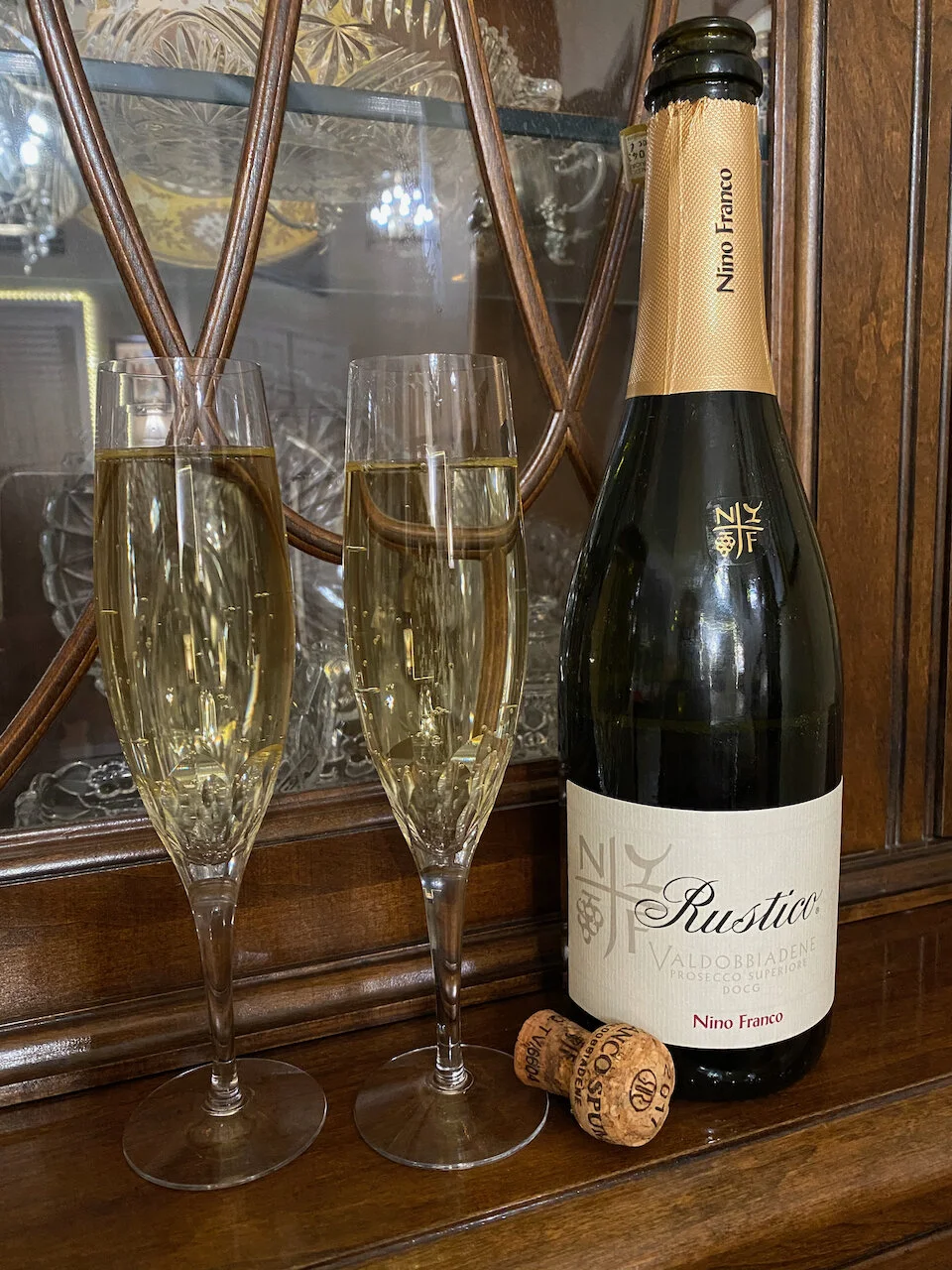For a lot of people, half the fun of opening a bottle of sparkling wine is popping the cork such that it flies across the room. Or an even more dramatic way is using a saber to knock the top off the bottle. And, the big spray that goes flying out of the bottle! It’s all so dramatic!
But, if you have a really nice bottle of sparkling wine or Champagne that you’re actually looking forward to drinking, there’s a better way to open that bottle.
You actually don’t want that big explosion when opening sprinkling wine. When that happens, as shown in the photo, it rapidly releases a lot of the trapped gas (CO2) from the bottle which makes it go flat faster. Not to mention the amount of sparkling wine that ends up on the floor or ground and not in your glass.
So, here’s the best way to open sparkling wine that retains the fizz and leaves you with the whole bottle to enjoy.
Once you’ve removed the foil from the top of the bottle, grab the neck of the bottle with your four fingers and place your thumb over the cork and wire cage. Untwist the wire cage with your thumb still on top of it and the cork. Now, just slightly move your index finger up along with your thumb to grab hold of the cork and basket. Keeping one hand on top to hold the cork, grab the bottle by the base with your other hand. Then, with a good grip on the cork, twist the base of the bottle with the other hand. As you twist the bottle, allow the cork to slowly extract from the bottle by giving it a little wiggle such that when it fully extracts you either hear nothing (perfect!) or just a faint puff.
There you go! It may take a little practice. But this is a great way to ensure that you get to safely enjoy the whole bottle of sparkling wine. Cheers!




